위키 구독하기
Share wiki
Bookmark
Symbiotic
Symbiotic
Symbiotic(심바이오틱)은 네트워크 구축자가 재스테이킹을 관리하고 보안을 강화하는 동시에 사용자가 복리 보상을 누적할 수 있도록 지원하는 공유 보안 프로토콜입니다.[1][2]
개요
2024년 6월 11일 Misha Putiatin과 Algys Ievlev에 의해 출시된 Symbiotic은 권한 없는 환경에서 (재)스테이킹 관리를 위한 조정 계층 역할을 하도록 설계된 공유 보안 프로토콜입니다. 이 프로토콜은 네트워크가 담보, 노드 운영, 보상 및 슬래싱 메커니즘과 같은 측면을 감독할 수 있도록 하는 동시에 참가자가 공유 보안 계약에 참여하거나 참여하지 않을 수 있는 옵션을 제공하는 것을 목표로 합니다.
Symbiotic은 불변의 Ethereum(이더리움) 계약을 통해 위험을 줄이고 다중 자산, 네트워크와 무관한 설계를 통해 자본 효율성을 향상시키고자 합니다. 이 프로토콜은 담보(온체인 자산 표현), 자산 위임 관리를 위한 볼트, 네트워크 인프라를 위한 운영자, 슬래싱 패널티 처리를 위한 해결자, 보안 방법을 설정하는 네트워크의 다섯 가지 구성 요소로 구성됩니다.[1][2][3][4]

제품
담보
Symbiotic에서 담보는 DeFi(디파이) 포지션과 같이 프로토콜 외부에 보유될 수 있는 네트워크 보안에 사용되는 자산을 의미합니다. 이러한 자산은 필요한 경우 슬래싱 사건을 관리하는 기능을 갖춘 ERC-20(ERC-20) 토큰으로 표현됩니다. 담보 토큰은 볼트에 예치되며, 이는 운영자에게 자산을 할당하는 것을 목표로 합니다. 볼트는 허용 가능한 담보 및 슬래싱 메커니즘에 대한 조건을 설정하며, 네트워크는 참여하려면 이러한 조건에 동의해야 합니다.
기본 담보는 선택적 슬래싱 기록 기능이 있는 ERC-20(ERC-20) 토큰을 래핑한 담보 토큰의 기본 버전입니다. 이 구현은 추가 관리 기능을 제공하는 것을 목표로 합니다.[5]
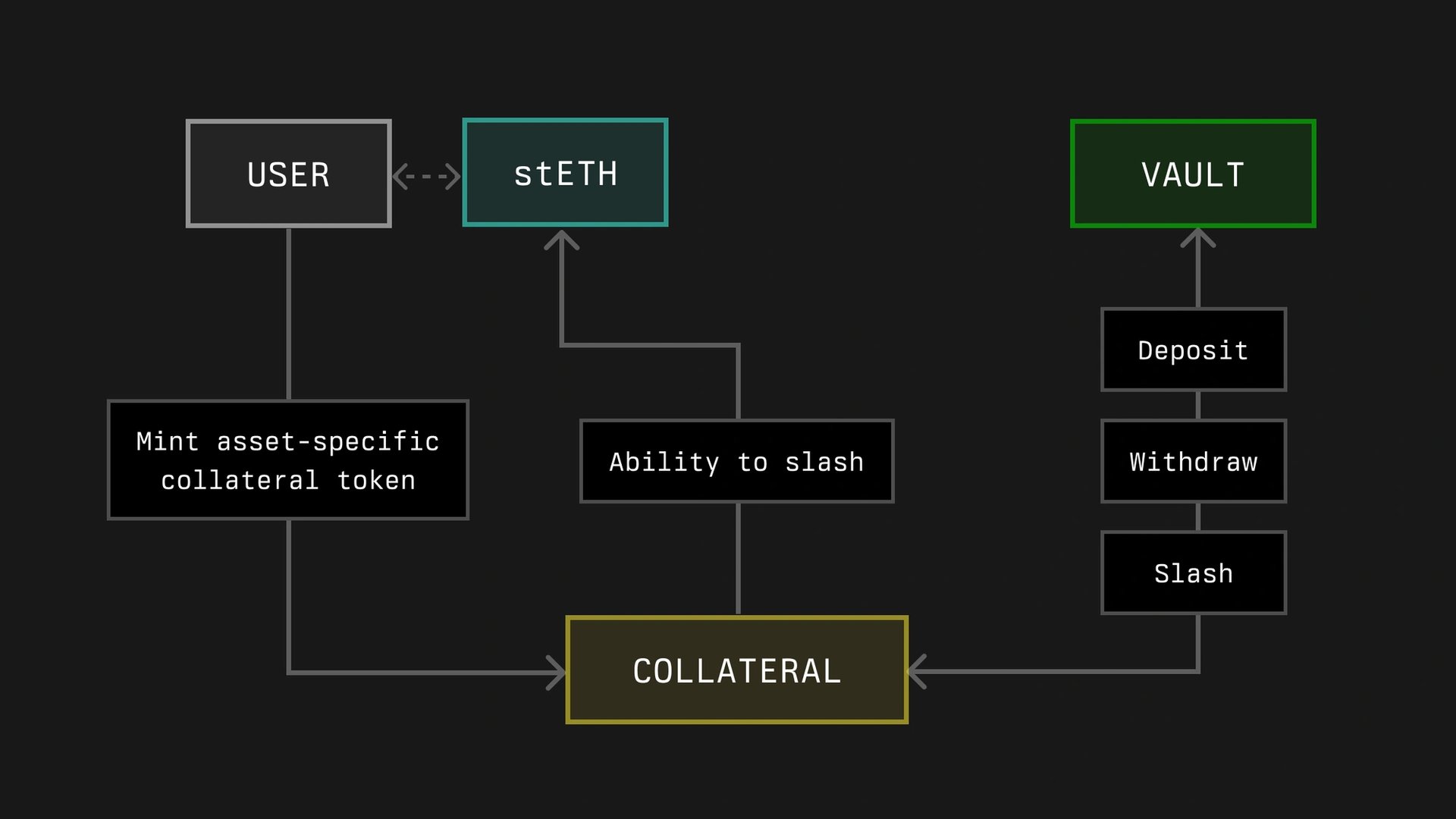
볼트
Symbiotic 프로토콜의 볼트는 담보의 위임 및 재스테이킹을 관리하는 것을 목표로 합니다. 볼트는 예치, 인출, 슬래싱 및 예치자에 대한 보상 분배를 처리합니다. 볼트는 불변 또는 조정 가능하도록 구성될 수 있으며, 운영자별 또는 다중 운영자 계약과 같은 다양한 사용 사례를 지원합니다.
각 볼트는 미리 정의된 ERC-20(ERC-20) 담보 토큰으로 작동하며 회계, 슬래싱 및 위임 모듈을 포함합니다. 이 프로토콜은 네트워크 사양에 따라 슬래싱을 즉시 또는 거부권 행사 프로세스를 통해 실행할 수 있도록 합니다. 볼트의 설계는 담보 및 보상 처리에 유연성과 보안을 모두 제공하고자 합니다.[6]
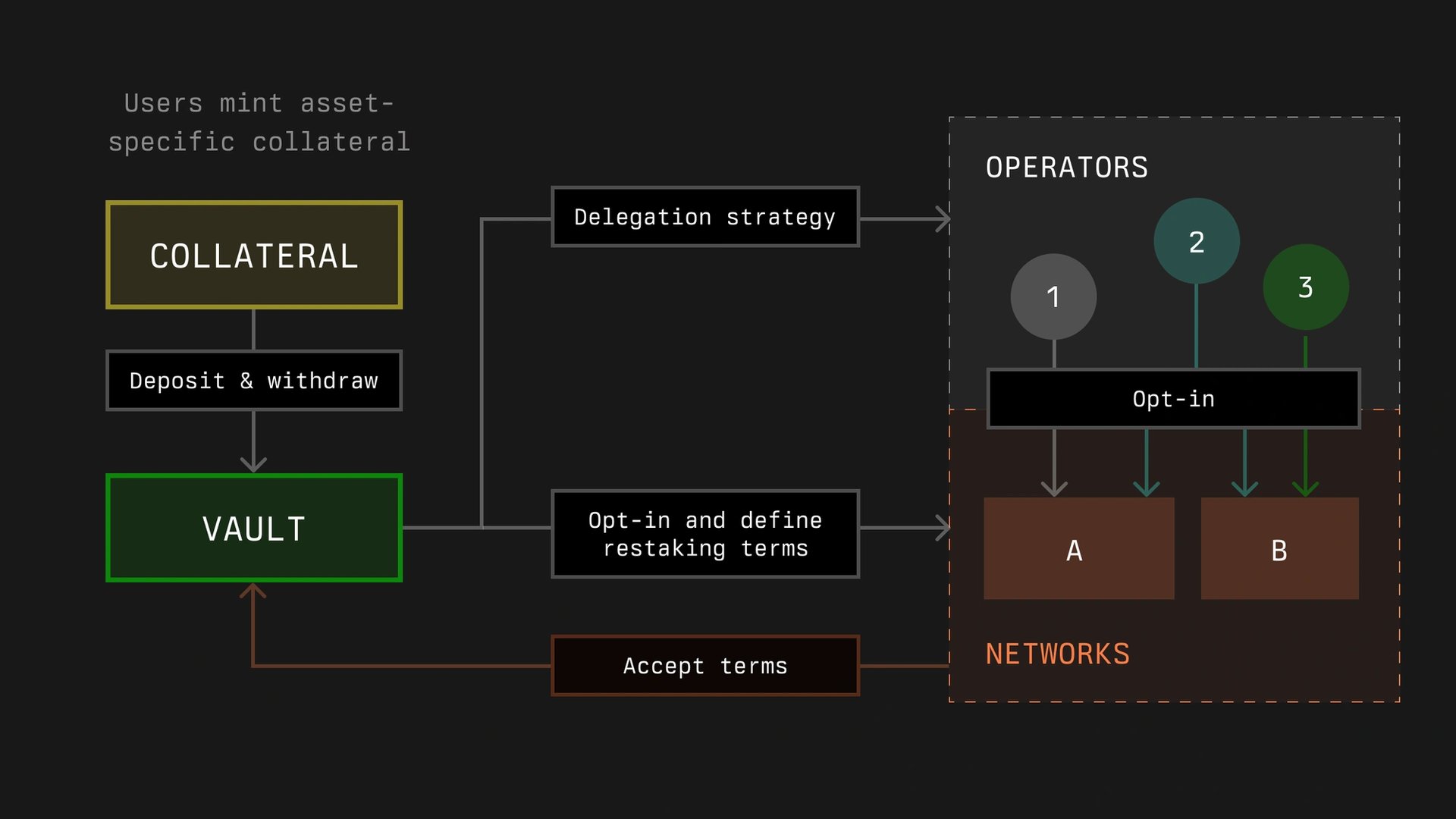
네트워크
Symbiotic 프레임워크에서 네트워크는 보안 및 경제적 지원이 필요한 분산 시스템을 나타내며, Symbiotic을 통해 이를 얻고자 합니다. 이러한 네트워크는 주소와 슬래싱 로직을 포함하는 미들웨어 계약으로 식별되며 에포크라고 하는 정의된 기간 내에 작동합니다. 네트워크는 볼트를 통해 스테이크 할당에 대한 규칙과 제한을 설정할 수 있습니다.
슬래싱은 운영자의 옵트인 상태와 미리 정의된 제한에 따라 즉시 또는 거부권 행사 프로세스를 통해 실행될 수 있습니다. 슬래싱된 금액은 크로스 슬래싱 또는 거부권 절차로 인해 조정될 수 있습니다.
운영자와 스테이커에 대한 보상은 운영자 등록 및 스테이킹 정보의 데이터를 기반으로 오프체인 계산 또는 온체인 방법과 같은 메커니즘을 통해 분배될 예정입니다.[7]
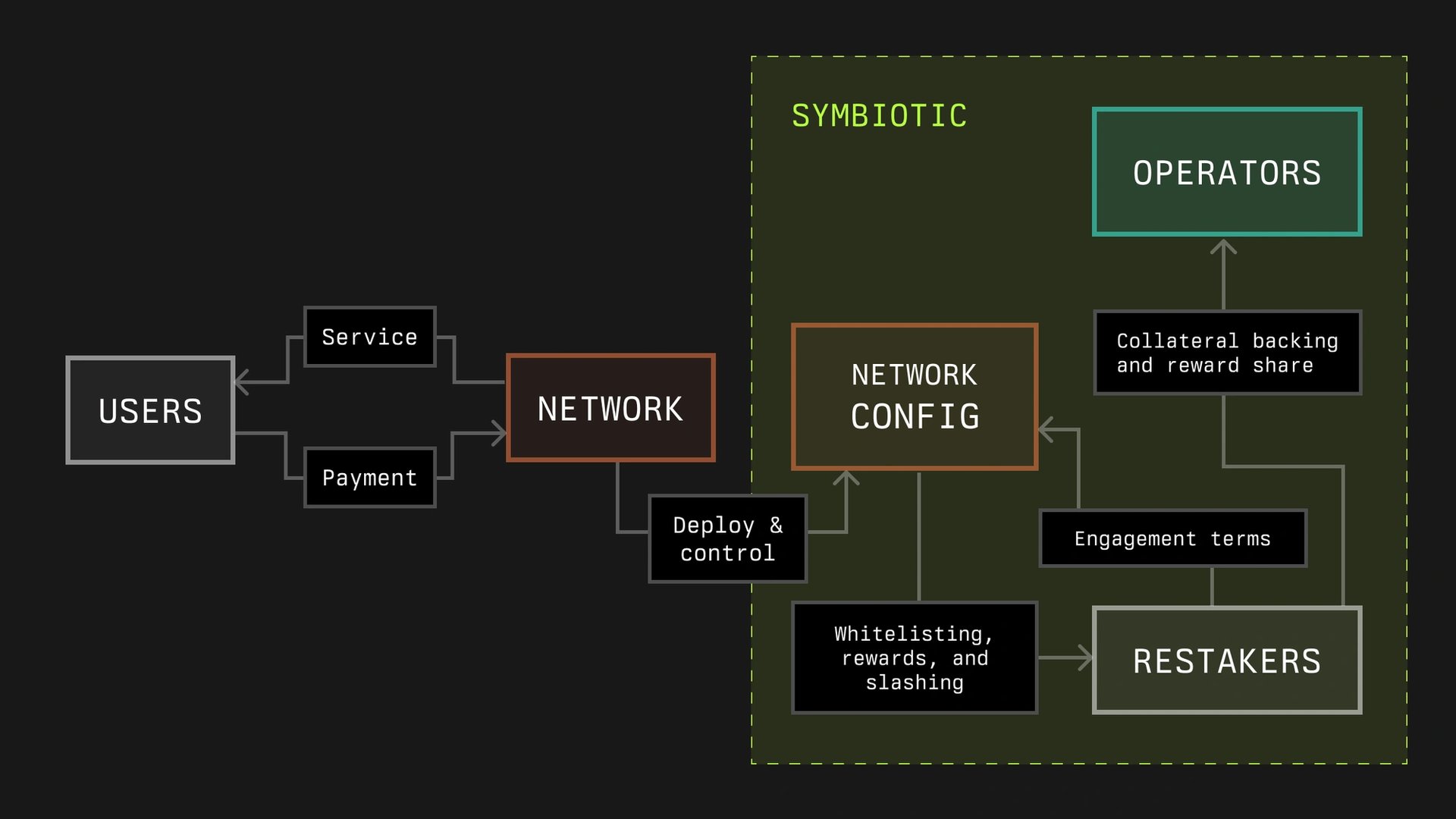
운영자
운영자는 분산 네트워크의 인프라를 관리하며 OperatorRegistry에 등록됩니다. 이 프로토콜은 볼트를 통해 다양한 소스의 스테이크 할당을 용이하게 하여 단일 노드가 여러 네트워크를 지원할 수 있도록 합니다.
운영자는 스테이크를 받으려면 네트워크와 볼트에 옵트인해야 하며, 스테이크는 정의된 제한에 따라 분배됩니다. 네트워크는 평판 및 스테이크 금액과 같은 기준에 따라 독립적으로 운영자 포함을 결정합니다.
운영자가 옵트인하면 스테이크가 활성화되고 잠재적인 슬래싱의 대상이 됩니다. 슬래싱 프로세스는 보안을 강화하기 위한 선택적 타임락을 포함하는 프로토콜의 모듈에 의해 관리됩니다.[8]
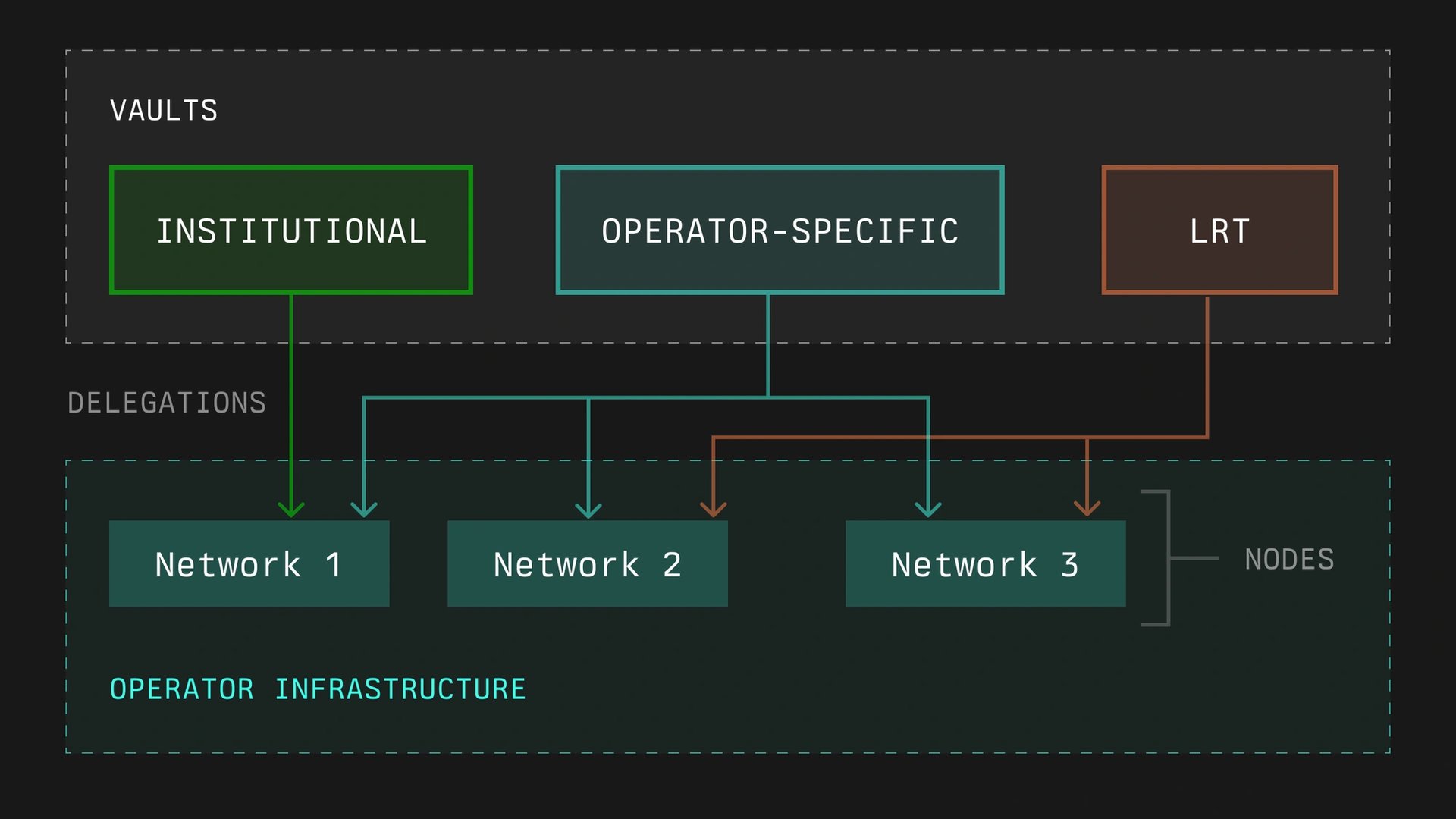
해결자
Symbiotic의 해결자는 슬래싱 사건을 승인하거나 거부하여 관리하도록 설계되었습니다. 해결자는 계약 또는 개체일 수 있으며 다양한 네트워크에서 사용될 수 있습니다. 해결자의 선택은 네트워크와 볼트 간의 계약에 따라 결정됩니다. 볼트는 UMA 또는 Kleros와 같은 분산 분쟁 해결 시스템을 포함하여 다양한 해결자를 사용하거나 전혀 사용하지 않을 수 있습니다.
해결자는 볼트의 슬래셔 모듈에서 슬래싱 요청을 처리합니다. 해결자는 요청을 거부하거나 승인할 기간이 정해져 있습니다. 조치가 취해지지 않으면 요청은 자동으로 승인된 것으로 간주됩니다.[9]
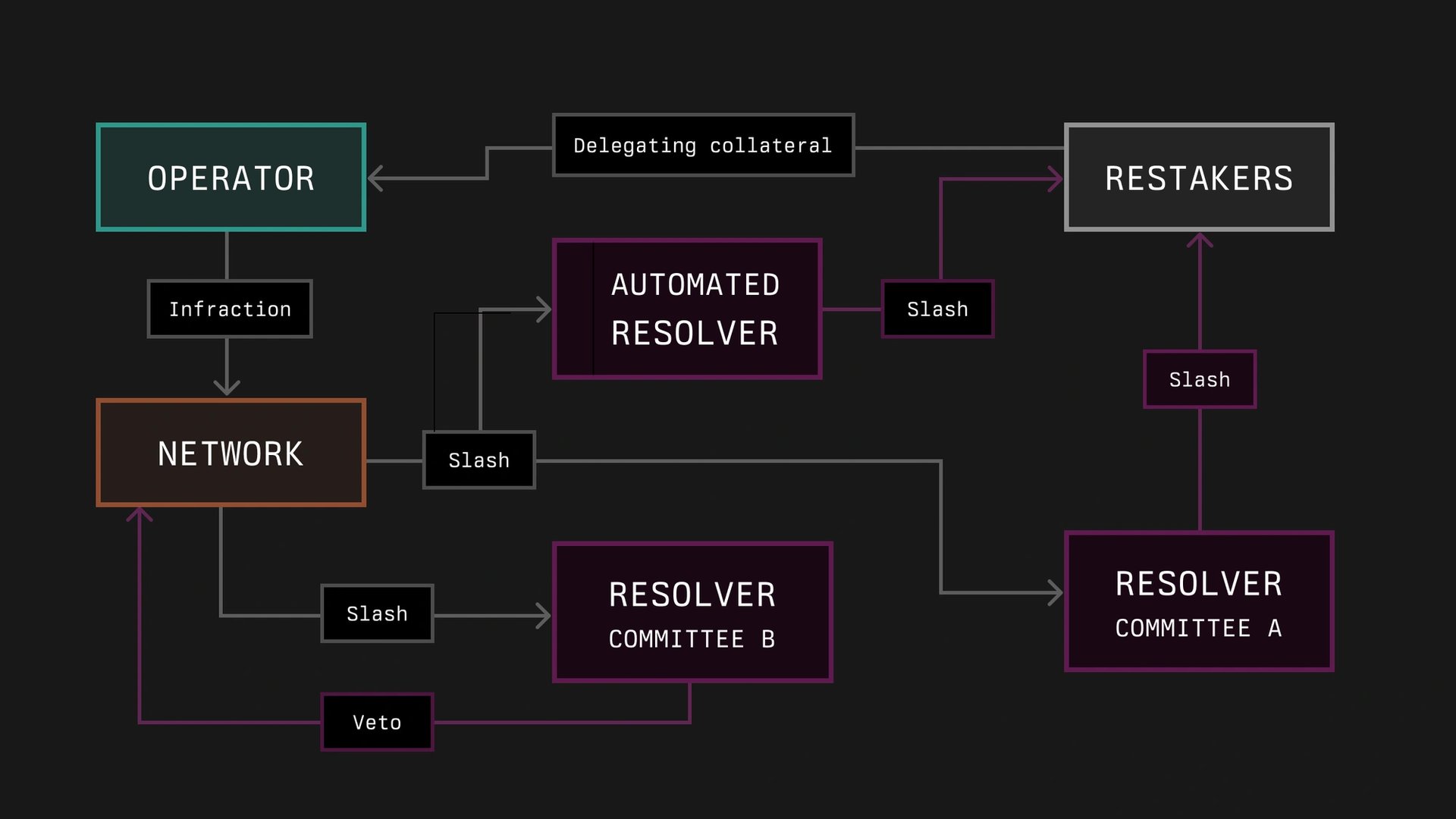
투자
Symbiotic은 Paradigm(패러다임)과 cyberFund가 주도하는 시드 투자로 580만 달러를 유치했습니다. Paradigm(패러다임)은 다양한 암호화폐 프로젝트에 투자하는 것으로 알려져 있습니다.[3][10]
파트너
Symbiotic은 출시를 위해 여러 회사와 파트너십을 맺었습니다.
- Ethena(에세나)
- LayerZero(레이어제로)
- bolt
- Hyperlane
- Marlin(말린)
- Fairblock
- adri
- oio
- Drosera
- Blockless
- Rollkit
- Cycle
- Aizel Network
- stork
- Mind Network
- dopp[10]
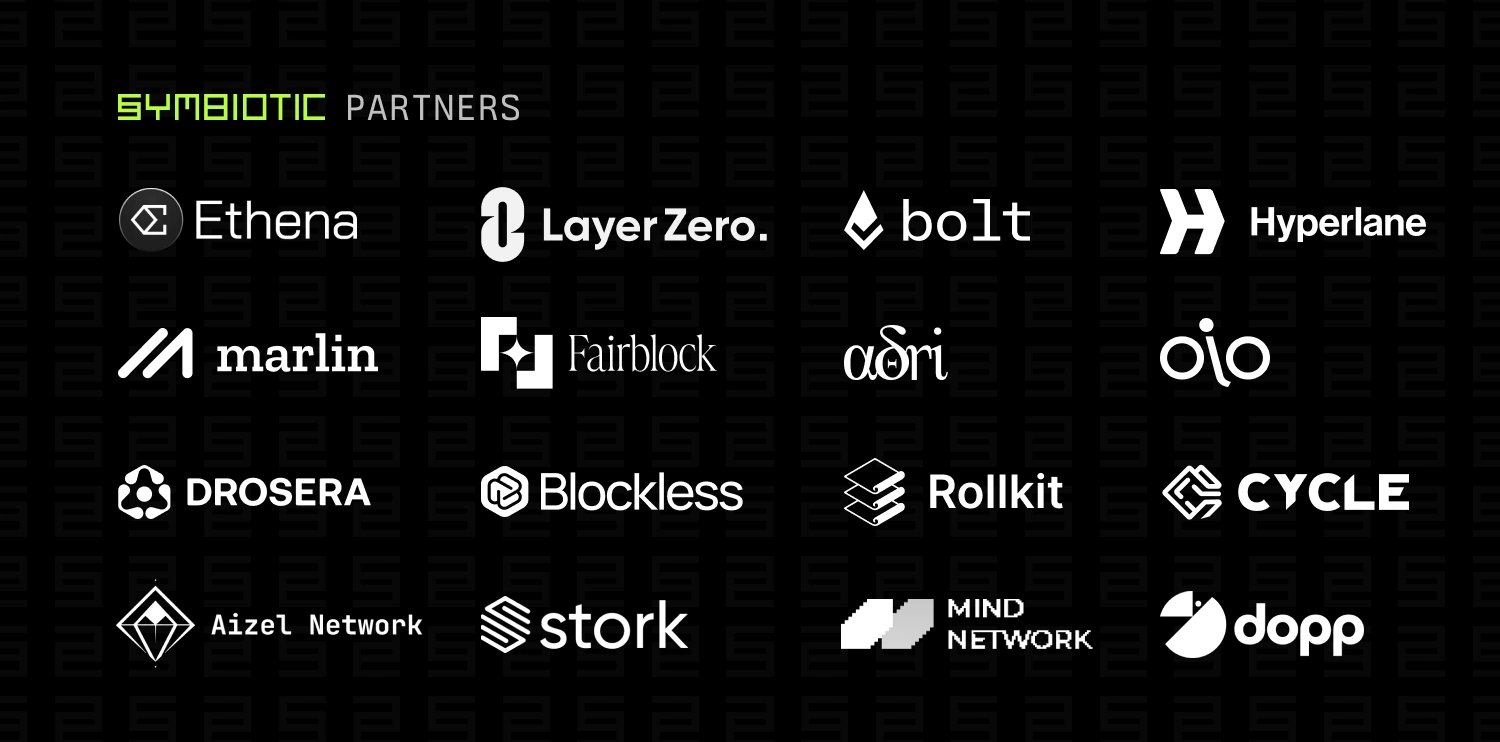
잘못된 내용이 있나요?
